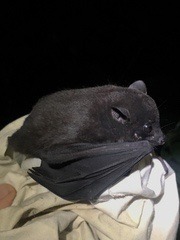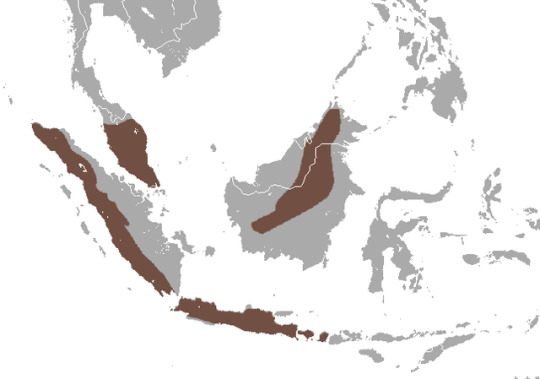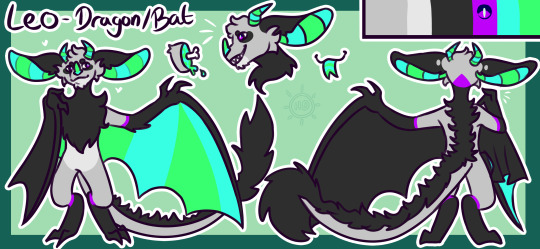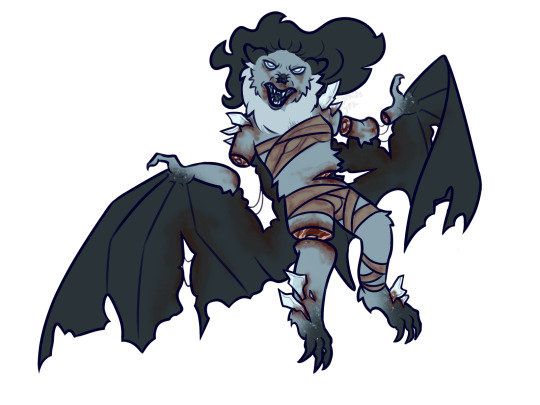#yinpterochiroptera
Text
BAT #1 🦇 🦇 🦇 🦇 🦇 🦇 🦇 🦇
Suborder: Yinpterochiroptera
Super family: Pteropodoidea
Subfamily: Cynopterina
Genus: Aethalops
Name: Pygmy fruit bat (Aethalops alecto)
Also known as the grey fruit bat, this little guy happily thrives in Peninsular Malaysia, Sumatra (island of western Indonesia) and Java (another Indonesian island). They like the forests!!! Specifically montane forests which are tropical and subtropical moist broadleaf forests, also known as a cloud forests!!! What cuties!!! There aren’t many and they have only been studied a couple times ever!! They weigh 0.5 oz 🥺🥺.





#bats#list of bats#chiroptera#anamalia#chordata#mammalia#science#yinpterochiroptera#fruit bats#cute bats#echolocation#old world fruit bats#bat collector#bat project#bat love#bat blog#every single bat#fruit bat#bat
93 notes
·
View notes
Text




We are FURDEAD!!
#ensemble stars#enstars#rei sakuma#kaoru hakaze#adonis otogari#koga oogami#undead#furry art#my art#as always thier species are yinpterochiroptera. ethiopian wolf. spectacled bear and canis lupis lainger respectively#augh ive got nothing to add this time ig undead is suprisingly canine coded huh
205 notes
·
View notes
Note
Any specific bat species recommendations for a sona (because I have no idea what to do lol)
Depends what you're going for! If you're looking for cute then you can't go wrong with a flying fox (I'd pick one with some colour variation, lots of them have orange ruffs, so maybe a Ryuku flying fox or a Specatcled flying fox), if you're going for the sort of classic bat look then a long-eared bat of some kind is a good shout (my own fursona is a grey long-ear and dragon hybrid), if you're going for max cool then you could go for a species of vampire bat, and if you want fun colours then maybe a painted bat, a badger bat, or a honduran white! Even then there's a bazillion different types all of which are brilliant choices :)
In fact here's some anthro bats I've drawn if you want some examples, they're under the cut and there's a blood warning for the last one.

My own boy Leo (grey long eared bat/dragon hybrid, although i designed him a while ago so he's not as accurate to an actual bat as he could be)

Here's an anthro astarion I drew (Ghost bat) (as in Macroderma gigas)

And here's the Spirit dbd as a furry (Ryuku flying fox). Honestly I'm the world's biggest Yangochiroptera fan but Yinpterochiroptera make GREAT anthros imo.
#A bumblebee bat would also be a cute sona#It's occured to me this probably isn't super useful because i am covinced you could make ANY bat work as a sona#lol sorry and best of luck!!#ask#unnamedboxvoid#not bats
11 notes
·
View notes
Text
4 notes
·
View notes
Text

The Flying Beast; Bathrata
Bathrata is a large basal bat that lives in cold swamps and ruined civilazations, they are fairly intelligent animals capable of massive problem solving skills and and work with each other cooperatively whenever danger is nearby so they can protect their youngs,these monsters eat large animals but often prefers small prey as its quite difficult to hunt large preys as always, interestingly these bats carry an infectious disease that infects dragons making them very tired and groaning in pain extremely quickly, no one knows what it is and it only seems to be infecting elder dragons as theres no signs of this disease infecting other monsters or even humans only in dragons suggesting that they use that disease as a defense against dragons, these bats are extremely dangerous only the bravest and most experienced hunters can challenge these beasts!
Classification; Fanged Beast
Order: Chiroptera
Suborder: Yinpterochiroptera
Superorder: Laurasiatheria
Family: Pteropodidae
Size; 38ft long
Elements: none
Ailments: Bleeding
Weakest To: None
You can leave your thoughts down here on the replies i would love to see what you all think of this monster i made that would be appreciating ^w^!
2 notes
·
View notes
Text

Malayan fruit bat (Pteropus vampyrus)
Photo by Maksim Shutov
#malayan fruit bat#pteropus vampyrus#pteropus#pteropodini#pteropodinae#pteropodidae#pteropodoidea#yinpterochiroptera#chiroptera#scrotifera#laurasiatheria#boreoeutheria#eutheria#mammalia#tetrapoda#vertebrata#chordata
91 notes
·
View notes
Text
hii i just spent like 2 hours classifying all the silverwing characters you should go read it all :D (disclaimer though I'm not an expert so I'd love to hear other peoples thoughts on this! and feel free to tell me if I made a mistake or missed anything!)
im putting it under the cut cause its super long (not like so long it takes hours to read but its sorta lengthy)
Shade, Ariel, Cassiel, Chinook, Bathsheba, Frieda, Yorick, Icarus, Luna, Ishmael, Yara Osric, Jarod, Penumbra, Windsling, Rasha, Mercury, Aurora, Lucretia, Plato, Isis, Corona, and the rest of the Silverwings are silver haired bats (Lasionycteris noctivagans) This was stated by the author, Kenneth Oppel somewhere but I can't find the original source.
Marina and Penelope are Eastern red bats (Lasiurus borealis), also stated by the Kenneth Oppel.
Griffin I guess would maybe be considered a subspecies/hybrid of the two???
I'm not sure what type of bat Zephyr is, the book only says that he's albino. I think he's likely from the family Vespertilionidae, like most of the other characters though.
Scirocco is some sort of big eared bat. I'm thinking possibly from the genus Corynorhinus (big eared bats), but he could also be from a monotypic genus like Idionycteris phyllotis (Allen's big eared bat), Antrozous pallidus (pallid bat), or Euderma Maculatum (spotted bat).
Goth, Throbb, Phoenix, Murk, and Voxcazo are all spectral bats. The books refers to them all by their scientific name, Vampyrum Spectrum. Vampyrum is a monotypic genus known for being the largest Microbats, and having a largely carnivorous diet that includes other bats.
Arcadia is a hoary bat (Lasiurus cinereus). This is said when she first appears.
Caliban is a mastiff bat. It's mentioned in Sunwing. I'm not sure exactly which species but probably from the genus Eumops, which live in North America. The other genus of mastiff bats, Molossus, live in Mexico and South America.
Achilles Graywing is a gray bat (Myotis grisescens).
Nemo is a Greater bulldog bat (Noctilio leporinus). He's described to have strong hind claws and a bulldog like face (actually his description is really really detailed but its basically just a bulldog like face). He also eats fish. The lesser bulldog bat (Noctilio albiventris) feeds on aquatic insects, not fish.
Java is a Large flying fox (Pteropus vampyrus). She's described to have dark fur and a wingspan of around 5 ft. She also says that she is small for her species. The only other species with a wingspan of over 5 ft is the great flying fox (Pteropus neohibernicus), which has lighter fur unlike Java's. Another reason I think she's a large flying fox is because Java is the name of an island in Indonesia, where large flying foxes live. great flying foxes live in New Guinea and the Bismarck Archipelago.
Dante is described to have large pale ears, and his fur is streaked with light and dark fur. he also has a crest of lighter fur around his neck. His nose is described as "bulbous". It's an unusually detailed description.
It's even harder to figure this one out because his species could literally be from anywhere, unlike other characters, who all come from a specific place (like North America for the majority of the characters). All we know about him is that he fell into the Underworld. To make it even more complicated, he's over 1,000 years old, so his species may not even exist anymore. I looked through the lists of extinct bats but found nothing that resembles his description.
My best guess is that he's somehow related to the spotted bat (euderma maculatum), which fits most of the description except for the bulbous nose part, or maybe to one of the Phyllostomid genera such as Artibeus, Chiroderma, Platyrrhinus, Uroderma, or Vampyrodes, which all have white stripes and nose leaves. A Spotted bat seems more likely though.
And Lastly, the prehistoric bats.
Darkwing takes place around 65 million years ago, during the Paleocene epoch. The oldest bat fossils date back to the Eocene, only 52.2 million years ago, but Kenneth Oppel based Chiropters off of existing fossils, so the prehistoric bats are likely to be similar to one of the existing prehistoric bat genera.
Dusk has two claws, like modern flying foxes, and is insectivorous. He can also echolocate, which is not a skill that has been found in prehistoric bats, but some scientists believe that Pteropodidae (flying foxes) and the other families in the suborder
Yinpterochiroptera evolved from a common ancestor that could echolocate. It's thought that flying foxes
eventually lost the ability through evolution as they developed a more frugivorous diet. It's also noted that the artwork of the Chiropters in Darkwing makes them look very similar to flying foxes with their long fox-like snouts, suggesting that Dusk is some sort of Yinptetochiropteran ancestor. It can also be noted that the island Dusk lives on is covered in Sequoia trees, though they may have grown in different places 66 million years ago, so I'm sort of ignoring that.
Unfortunately, it's unlikely that Dusk can be classified in any genus of prehistoric bat, since the bats in Darkwing are the author's personal take on what these bats might have looked like, and aren't supposed to be a specific species.
Dusk's anatomy is similar to that of Icaronycteris index, a 52.2 million year old species that had two claws, looked like a flying fox, and was thought to have echolocation.
Palaeochiropteryx is also a contender, as it has two claws, was insectivorous, and probably had large ears and echolocation. It thought to be more closely related to the suborder Yangochiroptera, as opposed to Yinpterochiroptera. I'm not a bat expert though, so Dusk could very well be an ancestor of Yangochiroptera bats.
#PLEASE LOOK AT THIS I WORKED VERY HARD ON IT :}#silverwing#sunwing#firewing#darkwing#kenneth oppel#bats#animals#taxonomy#zoology#books#chiroptera#vampyrum spectrum#yangochiroptera#Yinpterochiroptera
70 notes
·
View notes
Text
Megabats vs. Microbats - What’s the difference?
First off, it’s important to remember that mega/microbat is no longer a way bats are classified. They aren’t generally used scientifically, but they’re still useful terms for describing bats, hence why they’re still around.
Also, please keep in mind these two things: 1, I am not a biologist!! I am just an autistic kid who knows a lot about bats and wants to infodump. 2, these are general differences. Most of these have exceptions, which I may or may not point out.
So, what are some main differences?
Size. Megabats and microbats were initially named for their larger/smaller size which is generally correct, however this isn’t always true. While megabats are typically bigger, around 1/3 of species weigh less than 50g. Similarly, microbats can be fairly big. It’s important to note that species such as the great flying fox (Pteropus neohibernicus) and kitti’s hog-nosed bat (Craseonycteris thonglongyai) are not representative of their respective families.
Echolocation. Bats are well-known for their ability to echolocate, however this actually only applies to microbats. They use a method called laryngeal echolocation, creating sounds such as squeaks and clicks in the vocal chords and then listening back for the echo. A few megabats use primitive echolocation methods, however this isn't standard.
Eyes & ears. Microbats are often known for their large ears, which they often need in order to listen bakc for echoes. Microbat ears often have a tragus, which helps with echolocation. Additionally, microbats have small eyes, as they rely on echolocation to detect their surroundings. Megabats, on the other hand, have simple ears lacking a tragus, as they don't echolocate. Megabats also typically have very good eyesight at low light and larger eyes than microbats.
Uropatagium & tails. Microbats usually have long tails surrounded by a large area of uropatagium (membrane around the hind legs), which megabats typically lack. This is because microbats need to be much more agile to chase insects in flight.
Diet. Microbats are usually insectivores, and some larger species may also be carnivorous, eating frogs, small mammals, and fish. Megabats are are almost entirely frugivorous, with some also being nectarivores.
Activity. Bats are typically represented as nocturnal, which is generally true for microbats. Megabats, however, are far more diverse; yes, many are nocturnal, but there are also many crepuscular and diurnal species. Both micro and megabats roost in a range of environments and can roost alone or in huge colonies.
Those are the main differences!! I hope this was as interesting to read as it was to write :>
#bat#bats#animals#mammals#megabat#microbat#chiroptera#yinpterochiroptera#yangochiroptera#education#animal#mammal#biology#zoology
20 notes
·
View notes
Photo

Flying Fox 03 by NellyGraceNG
7 notes
·
View notes
Text
BAT #4 🦇 🦇 🦇 🦇 🦇 🦇 🦇 🦇
Suborder: Yinpterochiroptera
Super family: Pteropodoidea
Subfamily: Cynopterina
Genus: Balionycteris
Name: Spotted-winged fruit bat (Balionycteris maculata)
The SMALLEST megabat in the WORLD, found in Indonesia and Malaysia. They have dark brown wings with pale cream polka dots!!! Like a cute flying mushroom. They love elevated rain forests as well as costal mangrove forests. Their favorite foods include figs, persimmons, and spiders 🕷️. Amazing fact???? They peep whilst foraging!!!! They also make complex sounds and squeaks whilst socializing!!!! I think I’ll die of joy UGH. They dig roosts between fern roots, which is super uncommon. Sometimes they will even take over and or termite nests. They can have two pups per year, and don’t form monogamous partnerships. Pups weigh 0.1 oz at birth!!! And grow to 0.46 oz as adults, with a 2 in length. F r e a k i n g t i n y.






#bats#list of bats#chiroptera#anamalia#chordata#mammalia#science#yinpterochiroptera#bat collector#bat blog#bat love#bat project#cute bats#every single bat#fruit bats#old world fruit bats#mangrove#trees and forests#indonesia#malaysia#borneo#ferns#spotted#mushroom bat
30 notes
·
View notes
Text





furry bts
#ensemble stars#enstars#tsukasa suou#leo tsukinaga#arashi narukami#izumi sena#ritsu sakuma#knights#furry art#my art#again thier species are red panda. asiatic lion. ragamuffin. snow leopard and yinpterochiroptera#i have exams in a few days so sorry these came out a bit shit TT#anyways woah these guys are cat coded as hell
53 notes
·
View notes
Photo


KNOW YOUR BATS: Yinpterochiroptera!
Bats, which are mammals of the order Chiroptera, were once divided into two main suborders: Megachiroptera (i.e. Pteropodidae, the Old World Fruit bat family) and the Microchiroptera (literally all other bats). But new genetic evidence shook up this traditional view, as well as debunking the commonly-held belief that bats were close relatives of primates. It turns out they’re an ancient sister group to the one that encompasses carnivores and hoofed mammals, with no close living relatives. Given the fact that their fossil record is scanty, with few transitional forms, the origin of bats is still very mysterious!
Since then, the bat families were organized into two new suborders: Yangochiroptera and Yinpterochiroptera. Above is a visual representation of the six bat families that make up Yinpterochiroptera, and below is a phylogeny of how all these families are related:

What do all these families have in common, besides their DNA? Well, all the families except one emit their echolocation sounds through their noses, which is why they often have fantastic skin extensions- or noseleaves- around their nostrils. The single family that does not do this is of course Pteropodidae, the Old World fruit bat group that includes the flying foxes. It’s believed that Pteropodidae lost their ability to echolocate sometime after they split from the rest of Yinpterochiroptera some 60 million years ago. A single genus within Pteropodidae, Rousettus, regained the ability to echolocate through tongue-clicking.
As for what else they all have in common, the answer is... not much, which was why it was such a surprise to scientists when DNA evidence put them all together. But this evidence has a good deal of support, so we must conclude that these families were exceptionally good at finding different niches.
Next time, we will look at the 13 families within Yangochiroptera, but I have a lot of drawing to do before then...
#yinpterochiroptera#pteropodidae#rhinolophidae#hipposideridae#craseonycteridae#megadermatidae#rhinopomatidae#long post
136 notes
·
View notes
Note
Just a heads up, bats aren’t really categorized as microbats and megabats anymore. The current categorization is Yangochiroptera and Yinpterochiroptera, since more recent research has shown that some bats (like bumblebee bats) share more in common with fruit bats than other so-called megabats. Nothing wrong with using them as tags if you want to separate bigger and smaller bats but just thought I’d let you know. :)
I know anon! Have done since before I started this account :> The only reason I use the older labels is because they're easier to spell and I'm a little more familiar with where bats fall within them, it just makes queuing easier because I don't need to look up quite as much additional information!
I appreciate the intent though and I get it, maybe once I'm more familiar with the dividing lines I'll tag em that way but for now we're goin old school I suppose lol
#Similar to the reason i tag using common names rather than binominal names. it's just easier for me since i queue a lot of bats at once#unfortunatley for a biology nerd and a writer I fucking SUCK at spelling#but yeah I appreciate the intent and there are a lot of people out here who straight up don't know this! so now they do :3#I guess I'm kind of perpetuating that somewhat but I'm some random guy on tumblr so its not a huge deal#ask#anonymous#not bats
10 notes
·
View notes
Note
whats your favorite word, llyr??
my favorite word?? ooo, that’s a tough one... probably any word that’s fun to say, like lollipop or potato... fuck is up there, though!!
#letters#server carg#((fun fact: my favorite word is yinpterochiroptera which is a categoty of bats :) chordata is also good though))
0 notes
Text
i think instead of arguing over really stupid 'science' polls that have a recognized objectively correct answer we should start making polls about ACTUAL science discourse. i want polls about whether bat taxonomy should follow the yinpterochiroptera/yangochiroptera split or the megachiroptera/microchiroptera split
2 notes
·
View notes
Text
“ megabats are big “ NO THEYRE NOT. YES they’re generally bigger than microbats. But they’re not big on the whole. Yinpterochiroptera isn’t based on size, and pteropodidae isn’t either. They may be bigger in general but that doesn’t mean they’re just “big bats”. The suborder is based off of evolutionary relationship, and they have other characteristics too (lack of echolocation, less uropatagium, frugivorous, etc.)
NO TALK ME I ANGY
15 notes
·
View notes